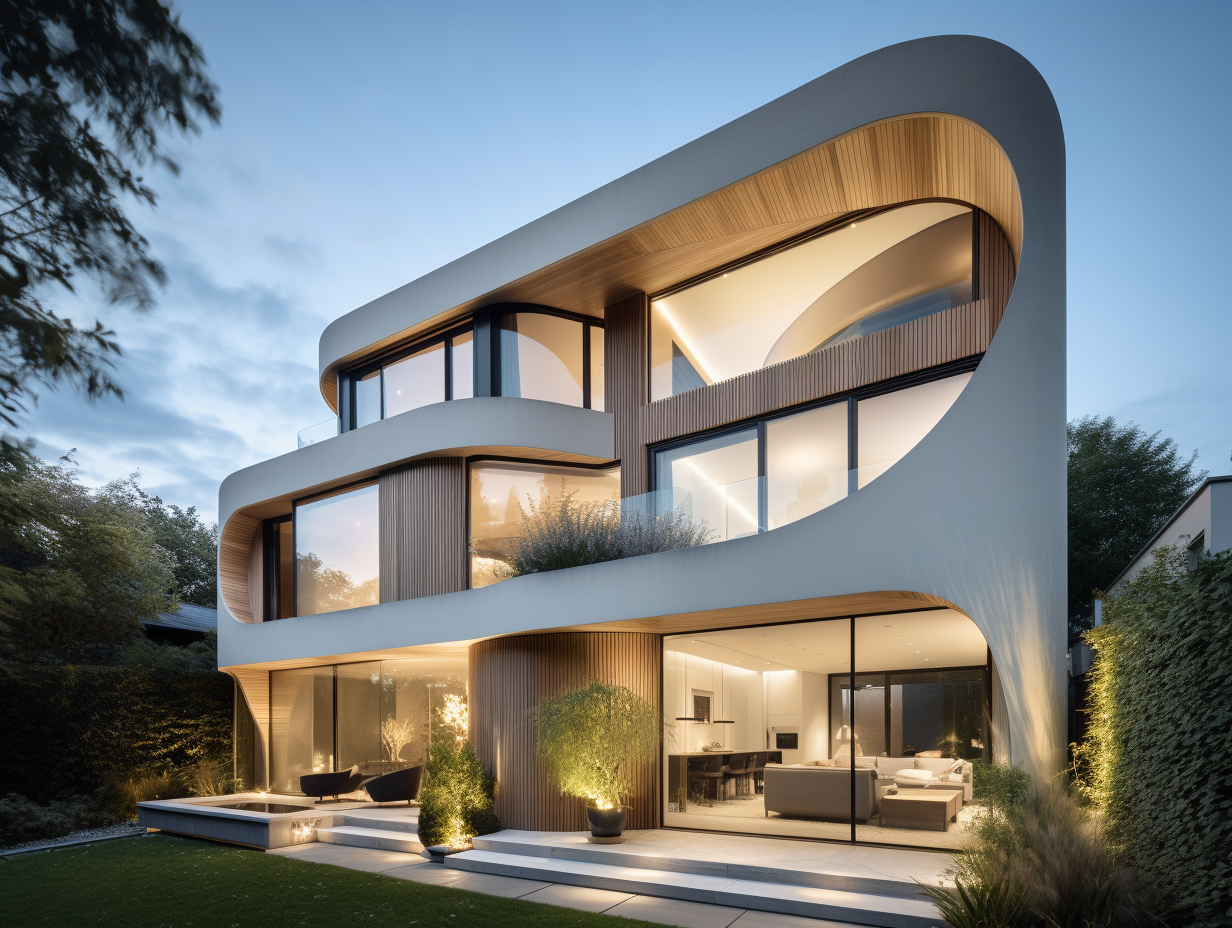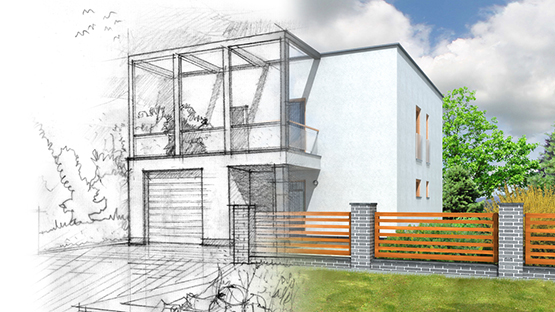How CDA Architects Combine Creativity and Performance in Modern Architecture
How CDA Architects Combine Creativity and Performance in Modern Architecture
Blog Article
The Influence of Technological Developments on the Style Practices of Contemporary Architects
The rapid advancement of technological devices has substantially reshaped the design landscape for contemporary designers, promoting unmatched levels of innovation and sustainability. The integration of Structure Details Modeling (BIM), parametric style, and artificial knowledge has not only streamlined collaboration among varied teams but also redefined project implementation. However, as engineers embrace these developments, they are challenged with complicated difficulties that might affect their imaginative procedures. Discovering these dynamics discloses a nuanced interaction in between modern technology and standard layout techniques, prompting a better examination of what the future holds for building methods.
Development of Architectural Devices
How have architectural tools transformed the style and building procedures over the centuries? The evolution of building tools has actually substantially impacted the effectiveness, precision, and creative thinking of style and building. In old times, designers depend on rudimentary instruments such as plumb bobs, determining poles, and standard geometry to create frameworks. These tools laid the structure for early building method, allowing for the building of famous structures, albeit with restrictions in precision and complexity.
With the advent of the Renaissance, the introduction of the compass and the protractor noted an essential shift. These tools made it possible for designers to accomplish higher precision in their layouts, helping with the development of more intricate and in proportion buildings (cda architects). The Industrial Change better changed building exercise with the intro of mechanized devices and materials, permitting larger and more ambitious tasks
In the 20th century, the growth of computer-aided style (CAD) software changed the landscape once again, supplying designers with extraordinary abilities in modeling and visualization. Today, advanced devices such as Building Information Modeling (BIM) and parametric layout software application proceed to press the boundaries of architectural technology, allowing a much more incorporated approach to style and construction processes.

Improved Collaboration in Style
As innovation remains to progress, boosted collaboration in layout has ended up being a cornerstone of modern-day architectural technique. The combination of electronic tools such as Building Details Modeling (BIM), cloud-based systems, and advanced visualization software has actually changed the method designers, engineers, and stakeholders communicate throughout the style process. These tools facilitate real-time interaction, allowing groups to share ideas, alterations, and responses quickly, no matter geographical place.
Furthermore, virtual truth (VR) and increased truth (AR) have more enriched collaborative efforts by allowing immersive experiences that allow clients and team participants to envision projects in a more appealing fashion. This degree of interaction not just boosts understanding yet also fosters a feeling of possession among stakeholders, bring about more informed decision-making.
Additionally, interdisciplinary cooperation has actually been streamlined with these technical innovations, enabling engineers to function more closely with other experts, such as city coordinators and environmental professionals. The outcome is a more cohesive technique to develop that considers various perspectives and competence. Inevitably, improved partnership in style is not just a fad; it is essential for creating innovative, useful, and cosmetically pleasing design in a significantly complex globe.
Sustainability Through Innovation
Sustainability in architecture has increasingly come to be linked why not try this out with technological technology, driving the market towards ecologically accountable methods - cda architects. Contemporary architects are leveraging innovative modern technologies to decrease ecological impact while enhancing the efficiency of buildings. One noticeable instance is the use of Structure Details Modeling (BIM), which enables specific preparation and resource allowance, lowering waste throughout building and construction and advertising power efficiency throughout a building's lifecycle
Furthermore, smart products and energy-efficient systems are being integrated right into styles to enhance resource use. Technologies such as photovoltaic cells and green roof harness renewable resource sources, contributing to minimized carbon impacts. In addition, the application of fabricated knowledge in layout processes allows architects to imitate and evaluate power intake, guiding choices towards more lasting results.
The assimilation of sustainable technologies not only aligns with worldwide environmental objectives but also meets an increasing demand from customers for eco-friendly solutions. As architects embrace these technologies, the focus changes in the direction of producing rooms that are not only aesthetically pleasing however likewise functionally sustainable, therefore redefining the standards of modern design. By doing this, innovation acts as a catalyst for sustainability, allowing engineers to create structures that respect and enhance the native environment.
Obstacles in Implementation
While technological innovations in architecture hold fantastic assurance for boosting sustainability, their application commonly encounters substantial difficulties. One primary obstacle is the high learning curve connected with new modern technologies. Architects and construction specialists may call for substantial training to properly make use of sophisticated software application and tools, which can delay task timelines and enhance expenses.
Furthermore, the assimilation of emerging innovations, such as Structure Info Modeling (BIM) and lasting materials, commonly demands cooperation throughout multidisciplinary groups. This cooperation can be impeded by differences in visit the site knowledge, operations, and communication designs, leading to prospective conflicts and inadequacies.
Financial restrictions further complicate the adoption of cutting-edge technologies. Lots of building companies, particularly smaller sized ones, may lack the resources to purchase innovative tools, limiting their ability to take on bigger companies that can afford such financial investments.
Moreover, regulatory structures and building ordinance may not maintain pace with technical advancements, creating ambiguity and potential conformity concerns. This obstacle can prevent architects from totally welcoming new technologies, as the threat of non-compliance may exceed the advantages. Therefore, dealing with these implementation challenges is critical for the successful integration of technological developments in contemporary architectural practices.
Future Fads in Style
The difficulties related to the implementation of new technologies in style have triggered a reevaluation of future patterns within the industry. As architects browse problems such as sustainability, urbanization, and social equity, they are progressively embracing innovative technologies to enhance style efficiency and ecological performance.
One famous fad is the assimilation of expert system (AI) in the style process. AI tools can assess huge datasets to educate layout choices, improving both creativity and capability. Structure Details Modeling (BIM) continues to advance, making it possible for real-time collaboration amongst stakeholders and helping with structured job administration.
Sustainable design methods are also gaining energy, with architects concentrating on helpful site flexible reuse and regenerative design principles that decrease resource consumption and waste. The incorporation of wise products and sustainable power sources will certainly even more boost the durability of buildings when faced with environment adjustment.
In addition, the rise of parametric layout permits even more tailored and context-sensitive architectural options. By utilizing these improvements, designers are poised to develop developed settings that not only attend to the prompt needs of culture yet likewise prepare for future obstacles, therefore redefining the role of architecture in an ever-changing globe.
Verdict

Report this page